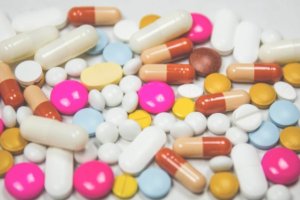When it comes to ending the opioid epidemic there is no magic pill

In the last issue of The Charlotte News, I reviewed some of the causes of our opioid epidemic and promised to discuss some possible remedies in this follow-up article.
Such a discussion could examine a number of interventions aimed at the multiple levels of the epidemic.
On a societal level we could end the failed War on Drugs and look at a combination of measures to decriminalize, legalize or regulate illicit drugs. We could eliminate the roots of addiction by eradicating poverty and ensure that all citizens are able to meet their basic needs: adequate housing, a livable wage, universal health care, healthy food, extended maternal/paternal leave, affordable quality childcare and adequate leisure time.
On a community level, we could ensure adequate funding for substance use and mental health treatment, support at-risk parents and children and provide effective drug prevention for our youth. On an individual level, we could more directly support those struggling with addiction. This might involve lobbying legislators, mentoring and supporting Vermonters coming out prison, and providing foster care for children of those struggling with addiction.
If you know and love someone struggling with addiction, you could help them access treatment and support them through their recovery. And one of the most powerful things any of us can do is to help reduce stigma surrounding substance use disorders by maintaining a compassionate and open-hearted stance to those in its throes. One cannot overestimate the harm of stigma and shame in impairing one’s recovery from substance use and the isolation it fosters. Those who suffer with addiction need compassion not criticism.
While we could explore any of these possible remedies, my particular expertise is medication-assisted treatment (MAT) of opioid use disorder (OUD). One of the first questions I am often asked when I tell others about the work I do is: “Aren’t you just trading out one addiction for another?” It is an entirely reasonable question and worth answering if one wishes to understand the current treatment of OUD. There are 3 FDA-approved medications for the treatment of OUD: methadone, buprenorphine with and without naloxone (trade names are Suboxone, Subutex) and naltrexone (trade name Vivitrol). Both buprenorphine and methadone are opioids, while naltrexone is an opioid blocker. I will focus on the two former medications because they are used more often and have better long-term data to support their use, including decreasing the risks of death, relapse and blood-borne diseases such as hepatitis and HIV.
When answering the above question, it is important to understand the difference between addiction and dependence. Dependence simply means that the body has made some adaptations to repeatedly ingesting a substance, and one can function normally only in the presence of that substance. When the substance is withdrawn, a physiologic reaction will occur called withdrawal. Withdrawal can be mild in the case of caffeine, painful in the case of opioids or life threatening as in the case of alcohol. When someone has been using opioids regularly for a certain amount of time, they will develop withdrawal symptoms if the drug is stopped abruptly.
Addiction, on the other hand has more to do with behaviors in which a person engages in order to obtain a drug, the problems resulting from the drug use (not able to work, maintain relationships, etc.) and the inability to stop despite these harms. One can be dependent on a substance and not be addicted. So if I were answering the question, “Aren’t you just trading out one dependence for another?” I would answer “Yes.” Most people who are prescribed methadone or buprenorphine will become physically dependent and develop withdrawal symptoms if they suddenly stop taking those medications, similar to the withdrawal seen in someone who stops using heroin abruptly or someone being prescribed opioids chronically.
But if asked the question, “Aren’t you just trading out one addiction for another?” I would answer “No.”
It helps to understand that most opioids that are abused are short acting—meaning they start acting seconds to minutes after taking them, peak and then are metabolized by the body within a few hours. Most people who use heroin daily will use it multiple times a day and, if they don’t, will develop crippling withdrawal symptoms. In contrast both methadone and buprenorphine are long-acting opioids typically taken once a day and, when dosed appropriately, ward off withdrawal symptoms. Methadone and buprenorphine allow people to get off the all-consuming, hamster wheel of short-acting opioid addiction. Instead, they can focus their energy on rebuilding their lives, including engaging in counseling to address the pain and trauma that lead them to use drugs.
This is extremely hard work and can take a long time. Some people are able to taper off of these medications at some point, and others will take them for the rest of their lives. It really is no different than treating someone’s type-2 diabetes with medications until they are able to make changes—like eating healthy, exercising and losing weight—that may allow them to no longer need medications. Sometimes these changes are enough and medication is no longer needed, and sometimes medication is needed for life. The question I often ask myself is why do some people view these two chronic conditions so differently?
As I have explored that question, two books on the topic of substance use disorders have provided me with some answers: Chasing the Scream by Johann Hari and In the Realm of Hungry Ghosts by Gabor Mate. I would invite you to read them and begin wrestling with these questions yourself.
Dr. Carina Cartelli is a Charlotte resident and a physician practicing at Howard Center’s Chittenden Clinic in South Burlington.
